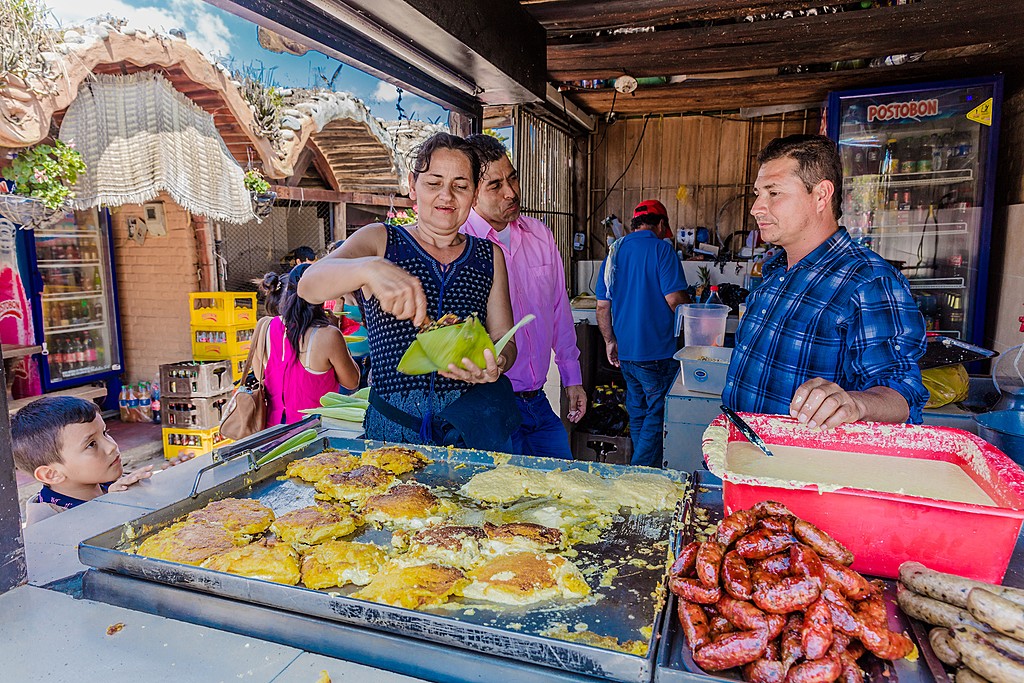
Among South American nations, Colombia has only recently begun to earn raves for gastronomy. But it’s ahead of the pack when it comes to inexpensive, delicious street food. Here are 22 must-try antojitos (snacks) as well as dishes sold at stalls and markets nationwide.
## A Culinary Journey Through Colombia: Discovering the Delights of Street Food
Colombia, a land of vibrant culture, breathtaking landscapes, and warm, welcoming people, also boasts an incredibly diverse and delicious street food scene. For Colombians, street food is far more than just a quick bite; it’s a way of life, a connection to their heritage, and a social experience enjoyed by people of all ages and backgrounds. Throughout the nation, from the bustling plazas near metro stations to the lively corners of busy intersections, you’ll encounter vendors skillfully preparing and selling a tantalizing array of fruits, corn-based creations, and savory, meat-filled treats.
Embarking on a street food adventure is undoubtedly one of the best ways to immerse yourself in Colombian culture and experience the country like a true local. As you savor each bite, you’ll begin to understand the essence of Colombian cuisine, developing an appreciation for the native ingredients and time-honored cooking techniques that have been passed down through generations. One of the most fascinating aspects of Colombian street food is its regional variations. The flavors and preparations of dishes can differ significantly from one region to another, so an *arepa* or *tamale* enjoyed in one area might bear little resemblance to its counterpart in another. This diversity makes exploring the street food scene an exciting and rewarding culinary journey.
One concern that many travelers have is the safety and hygiene of street food. However, in Colombia, you can generally rest assured that the food is prepared with care and cleanliness. Most vendors have been operating their stands for many years, and they take immense pride in the quality of their products. The competition among vendors is fierce, so those who don’t maintain high standards simply wouldn’t survive. So, prepare to indulge in the incredible flavors of Colombia’s streets!
Now, let’s dive into some of the must-try street food items that you absolutely shouldn’t miss during your exploration of this captivating country. These dishes will tantalize your taste buds and provide you with an authentic taste of Colombian culture.
## Almojábana: A Savory Start to Your Day
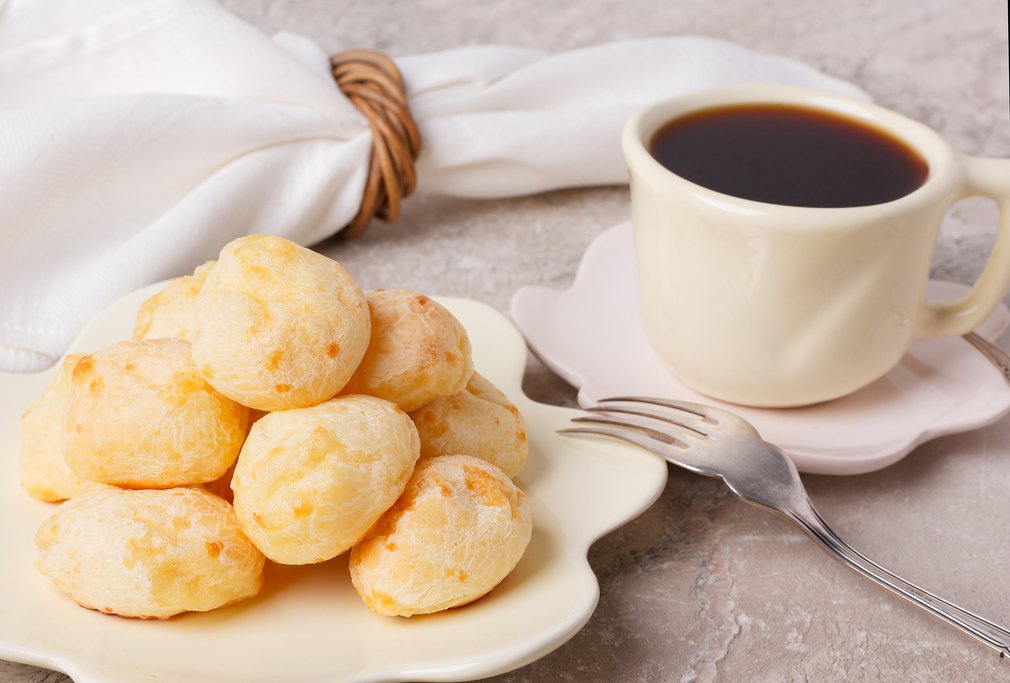
The *almojábana* is a beloved bun-style cheese bread that can be found throughout Colombia. This savory delight is crafted from a simple yet satisfying combination of pre-cooked cornmeal, eggs, milk, and salted cottage cheese. The result is a warm, slightly chewy bread with a distinct cheesy flavor that is incredibly addictive. *Almojábanas* are particularly popular in **Cali** and the **Valle del Cauca**, where they often take on a distinctive bagel-like shape. Colombians typically enjoy *almojábanas* as a breakfast item or a quick snack on the go, often paired with a *tintico* (a small cup of strong, black coffee). The combination of the savory bread and the rich coffee is the perfect way to start your day or energize yourself for an afternoon of exploring.
## Arepas: The Quintessential Colombian Street Food
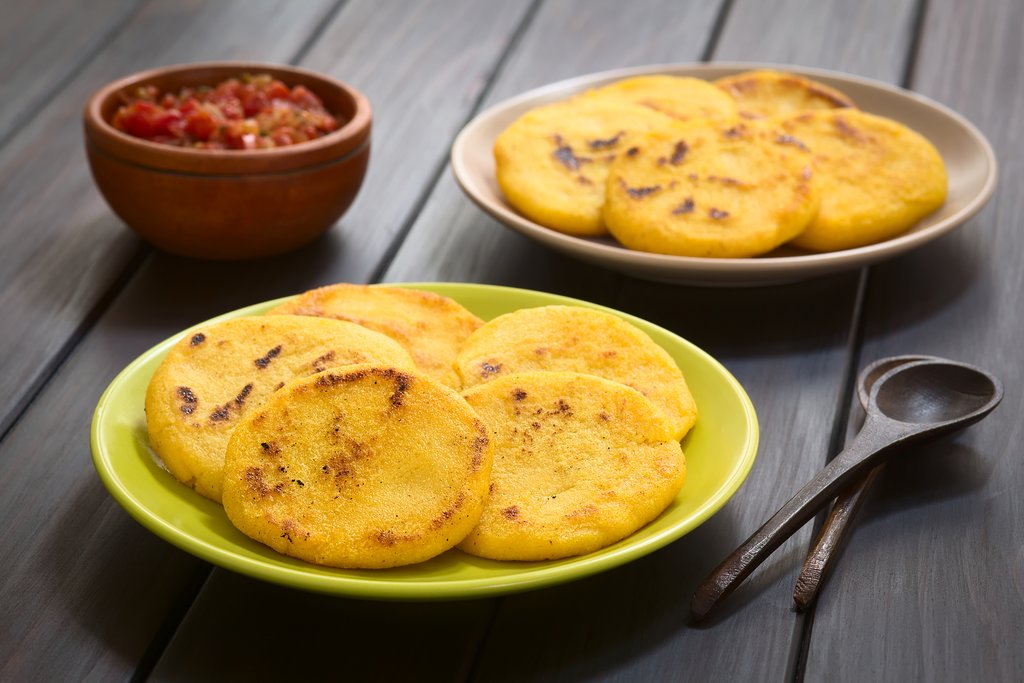
The *arepa* is undoubtedly the most iconic and ubiquitous street food in Colombia. This humble yet delicious dish is made from deep-fried sweet cornmeal dough. Don’t let the bland versions sometimes found in fast-food restaurants deter you; authentic street-fare *arepas* are typically much thicker, more flavorful, and prepared with a level of care that elevates them to a true culinary experience. Like many Colombian dishes, *arepas* are incredibly regional. In the highlands, you’ll find the *arepa de chóclo*, a thick corn cake generously buttered, griddled to perfection, and served with a crisp, brown crust topped with a generous slab of cheese.
**Medellín** boasts its own unique version, the *arepa de queso*, made with corn flour and cheese mixed together, flattened, and griddled until golden brown. It’s then drizzled with sweetened condensed milk and topped with white *quesito* (farm cheese) for a sweet and savory treat. In **Cartagena**, be sure to try the *arepa de huevo*, a unique creation featuring an egg cooked inside the twice-fried dough. The result is a crispy, savory *arepa* with a perfectly cooked egg nestled inside. With so many variations to choose from, exploring the world of *arepas* is a culinary adventure in itself.
## Avena: A Creamy and Refreshing Drink
Looking for a refreshing and satisfying beverage? Look no further than *avena*. This rich, creamy, oatmeal-based drink boasts a thick and custardy consistency, almost like a smoothie. Vegetarians and those with a sweet tooth will particularly enjoy this treat, as it’s made from a blend of oats, water, cinnamon, cloves, salt, and sugar, all boiled together and then simmered with milk before being served cold. Typically, cafes and restaurants serve *avena* in a tall glass, accompanied by a cinnamon stick. The aromatic spices and the creamy texture make *avena* a truly comforting and enjoyable drink.
## Buñuelos: Deep-Fried Balls of Cheesy Goodness
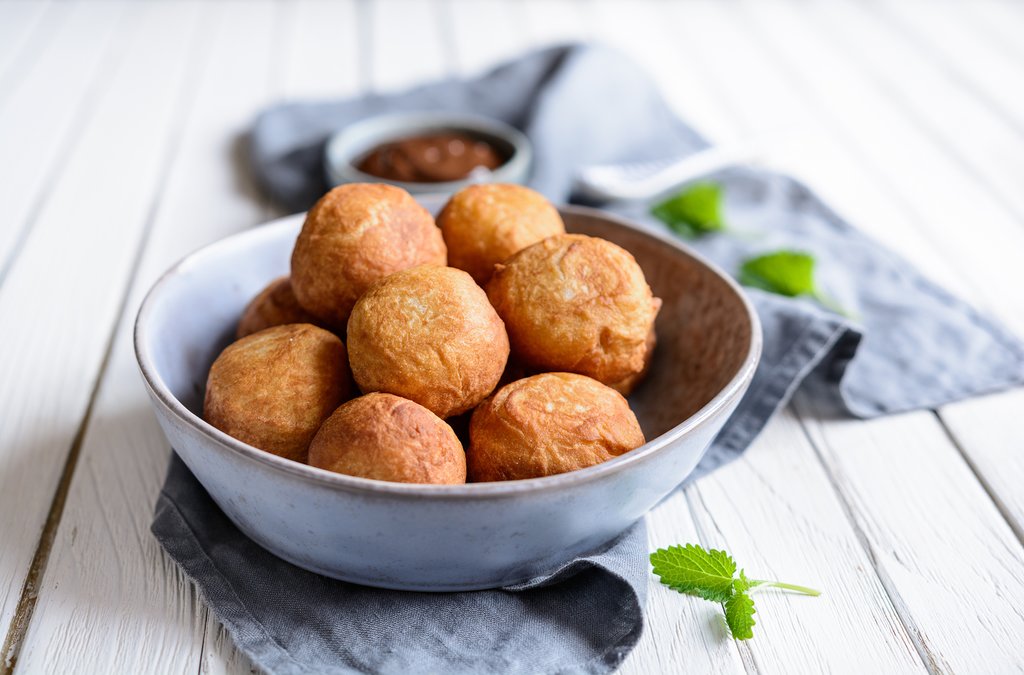
*Buñuelos*, savory deep-fried cheese balls, are a beloved breakfast treat and a Christmas-time staple in Colombia. Made from a combination of salty flour and curdled cheese, these golf-ball-sized delights are best enjoyed fresh and piping hot. While they’re delicious on their own, *buñuelos* are often served with chocolate sauce or *arequipe*, a Colombian version of *dulce de leche*, a rich confection made from sweetened milk. The combination of the savory, cheesy *buñuelo* and the sweet, creamy dipping sauce is simply irresistible.
## Casabe: A Crispy and Versatile Flatbread
Once an indigenous staple, *casabe*, a crispy flatbread made from *cassava* (yucca flour), is a familiar item throughout South America. While often served as a side dish to main plates and typically bland on its own, *casabe* takes on a new dimension when paired with other ingredients. Colombia has several regional variants, most notably the *casaba con queso de capa*, a mozzarella-like curdled cheese unique to **Mompos**. The combination of the crispy *casabe* and the creamy, flavorful cheese is a simple yet satisfying treat.
## Churros: A Sweet and Sugary Indulgence
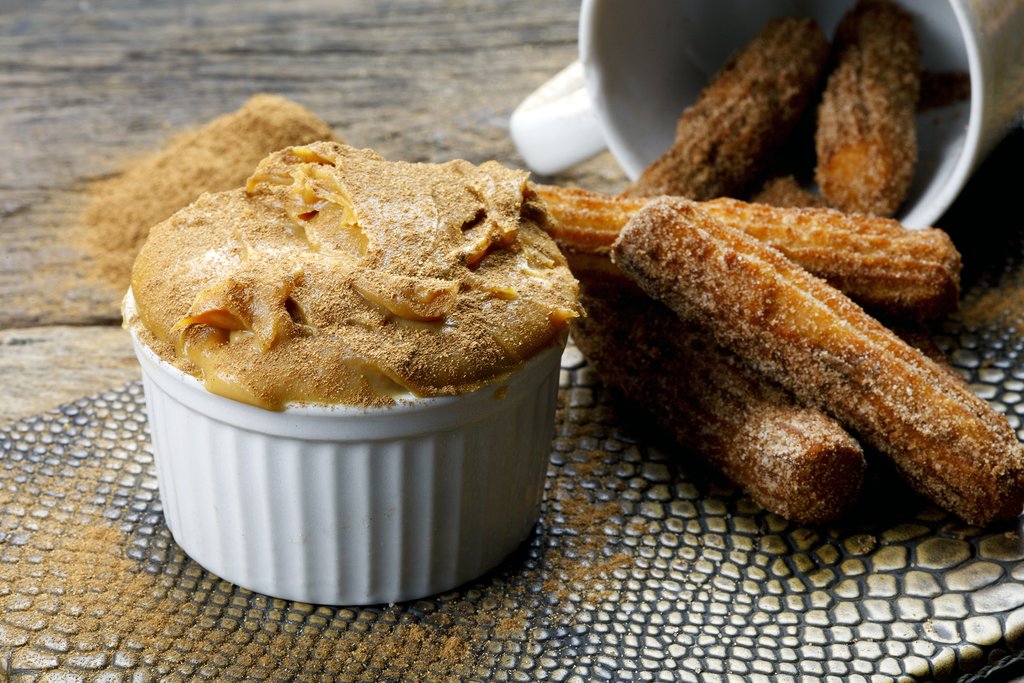
These deep-fried, donut-like pastries offer a sweet and satisfying treat for those with a craving for something sugary. While similar to traditional Spanish *churros*, Colombian versions often differ in their presentation. Rather than being served with a side dish of chocolate, Colombia’s *churros* are often served solo and sprinkled with sugar. In Medellín, they frequently come drizzled with *arequipe*, which is sometimes provided as a side dish for dipping. The crispy exterior and the soft, doughy interior, combined with the sweetness of the sugar or *arequipe*, make *churros* a delightful indulgence.
## Empanadas: Savory Pastries for On-the-Go Snacking
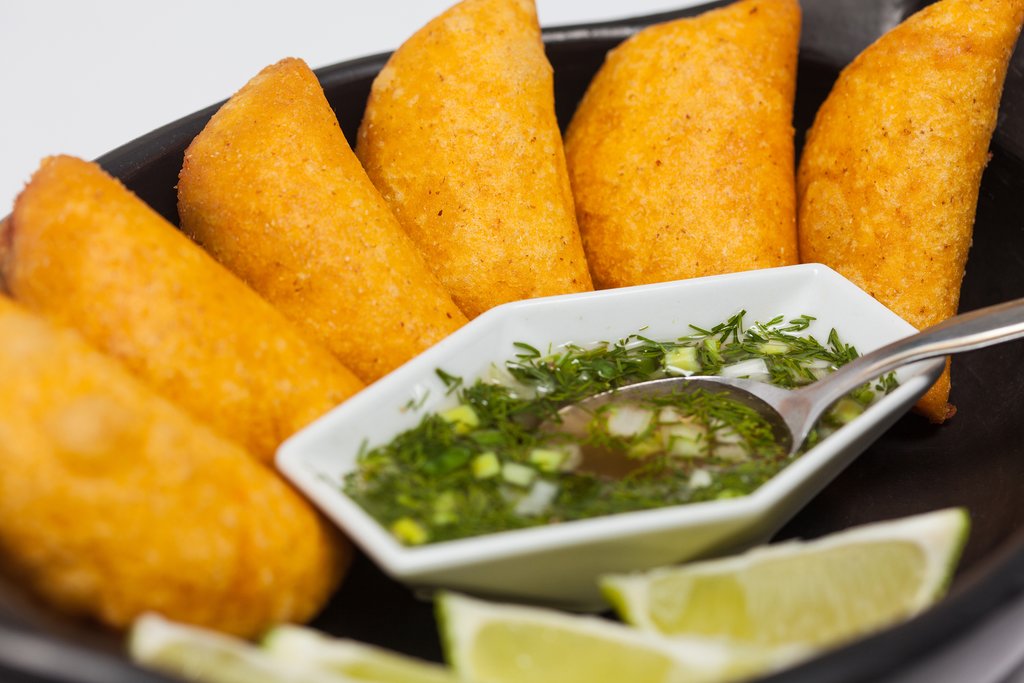
*Empanadas* are a staple of the Colombian street food scene, offering a savory and satisfying snack for those on the go. These deep-fried cornmeal dough pastries range in size from bite-sized to double-hand-size and are typically stuffed with potato and minced beef or chicken. You’ll also find vegetarian versions filled with a variety of vegetables. To enhance the flavor, *empanadas* are best enjoyed with a generous dollop of *salsa de ahí* (hot chile sauce). The crispy exterior, the flavorful filling, and the spicy kick of the sauce make *empanadas* a truly addictive treat.
## Hormegas Culoñas: A Unique and Crunchy Snack
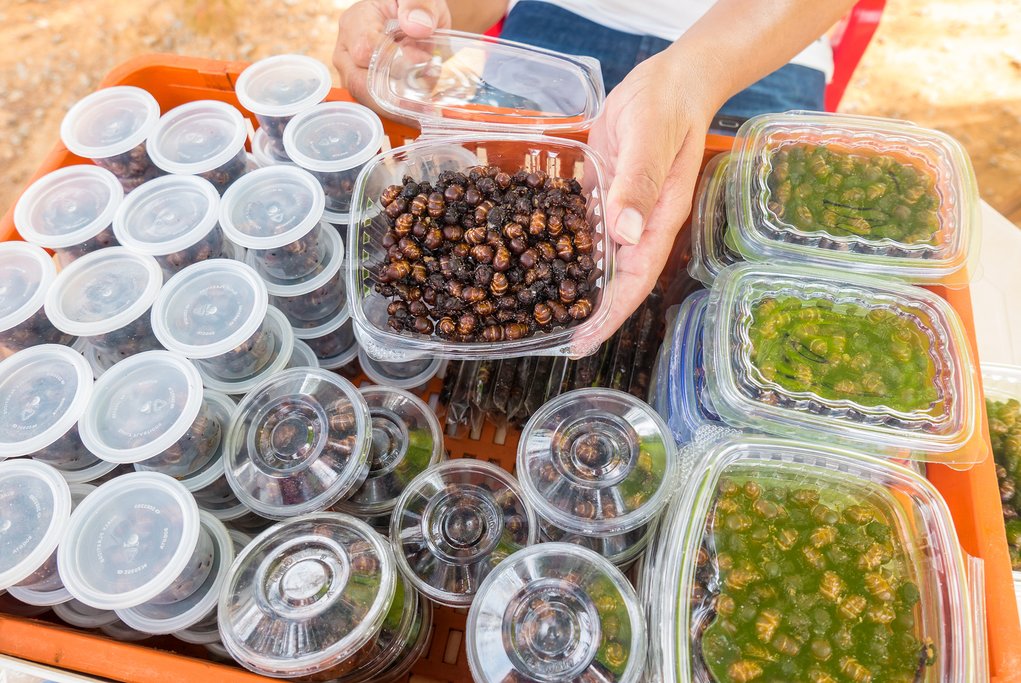
For the adventurous eater, *Hormegas Culoñas* (big ass ants) offer a truly unique and unforgettable culinary experience. Before you dismiss the idea of eating ants, consider that these aren’t just any ants; they’re a savory and nutritious treat unique to the **Norte de Santander** province. When roasted with salt, the crunchy and capacious rear-ends of this species of leaf-cutter ant are served as a breakfast side dish or an afternoon snack. Surprisingly, they have a texture and flavor not unlike roasted peanuts. You can find them sold in jars or paper bags at street stalls, notably in the colonial town of **Barichara**. If you’re looking for a truly authentic and unusual culinary adventure, don’t miss the opportunity to try *Hormegas Culoñas*.
## Jugos: A Refreshing and Fruity Escape
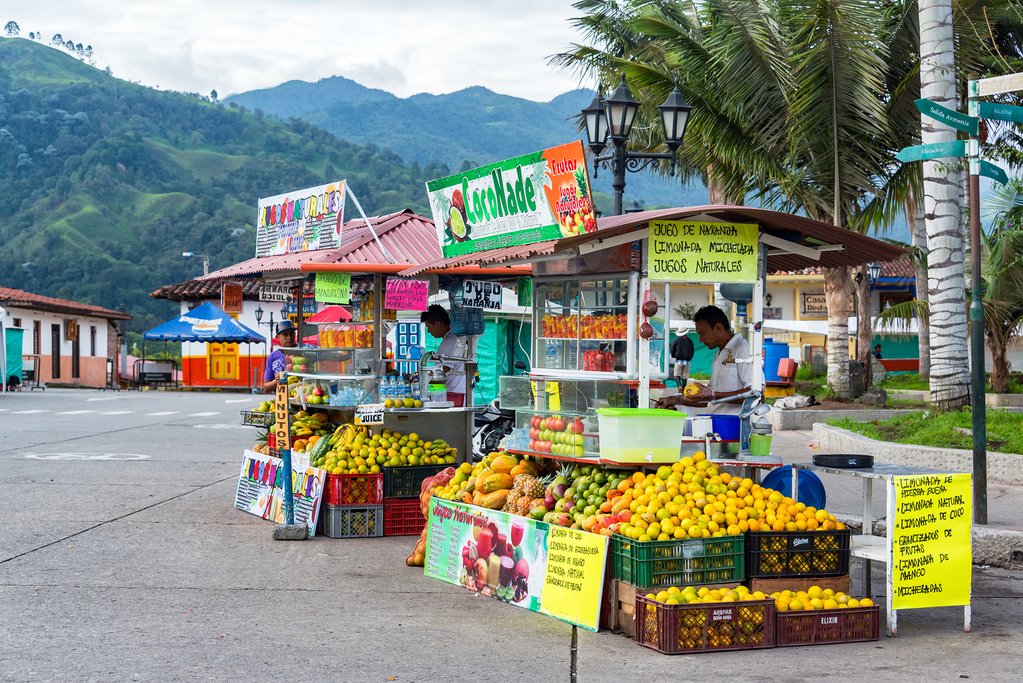
When it’s time to quench your thirst in Colombia, you’re never far from a fruit-juice stall. This country boasts an almost endless variety of *jugos*, from *sandia* (watermelon) to *limonada de coco* (a blend of coconut milk and lime blended with ice). These refreshing drinks are usually made to order with your choice of water or milk, and with or without sugar. Don’t be afraid to try fruits you may not know, such as *guanábana*, *lulo*, and *maracuyá* (passion fruit).
Beyond the standard offerings, you’ll also find regional specialties like the *champus* of **Cali**, a thick concoction of corn and fruits (such as lulo and pineapple) that’s typically eaten with a spoon. There’s also *cholados* (lulo blended with condensed milk, ice, and sugar), also of **Valle del Cauca**, and *borojó*, a rainforest fruit from the western **Chocó** region used to make a love juice (*jugo de amor*) popularly sold at stalls outside soccer stadiums to fans celebrating after the match.
## Lechón: Slow-Cooked Pork Perfection
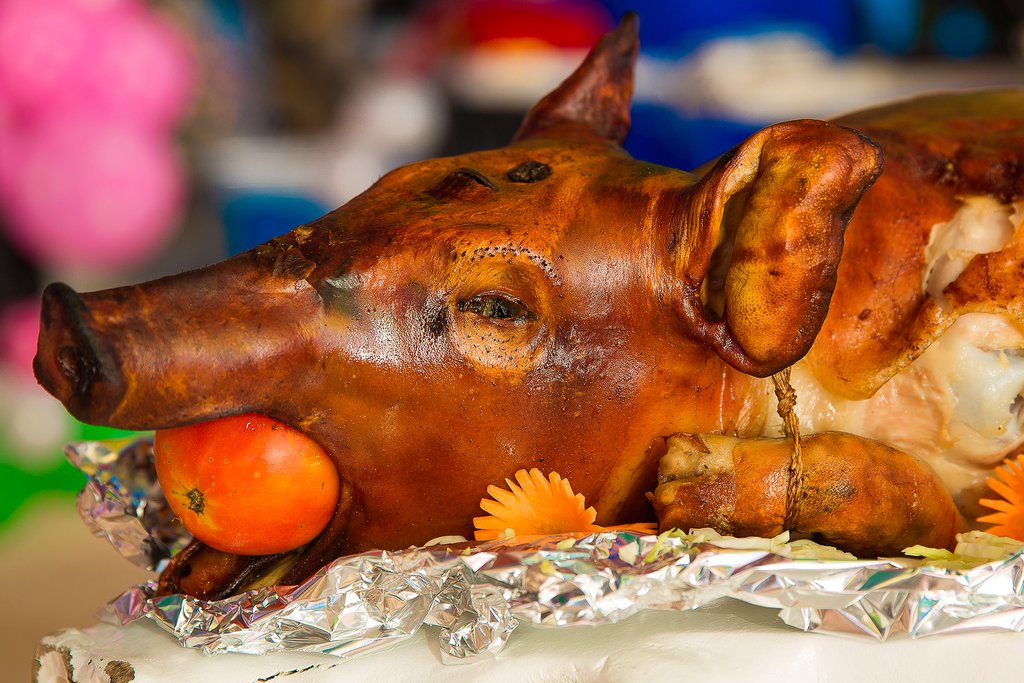
Like most South Americans, Colombians have a deep appreciation for pork, and *lechón* is the ultimate expression of this culinary love. *Lechón* is a suckling pig slow-cooked over a hot charcoal pit until the skin is incredibly crispy and the meat is tender and succulent. Street vendors sell it in chunks or strips, like pulled pork, often accompanied with hot sauce (*aji picante*) and a tamale or arepas. The combination of the crispy skin, the tender meat, and the spicy sauce is a flavor explosion that you won’t soon forget.
## Marranito: A Little Pig of Flavor
*Marranito* translates to “little pig” and is an affectionate term for this plantain ball stuffed with roast pork or rinds, sometimes seasoned with savory spices. The sweetness of the plantain complements the savory pork filling, creating a delightful balance of flavors.
## Mazorca: A Corn-Based Feast
This popular street dish features a stack of corn topped with pulled pork or other meat (or veggies), fries, cheese, and ketchup. It’s a hearty and satisfying meal that’s perfect for sharing or enjoying on your own.
## Merengón: A Fluffy Cloud of Sweetness
This fluffy merengue-based dessert resembles a pavlova and is most often served topped with strawberries, mango, or guanabana (a delicious tropical fruit) and whipped cream. The light and airy meringue, combined with the sweet fruit and creamy whipped cream, creates a heavenly dessert experience.
## Obleas: A Wafer-Thin Delight
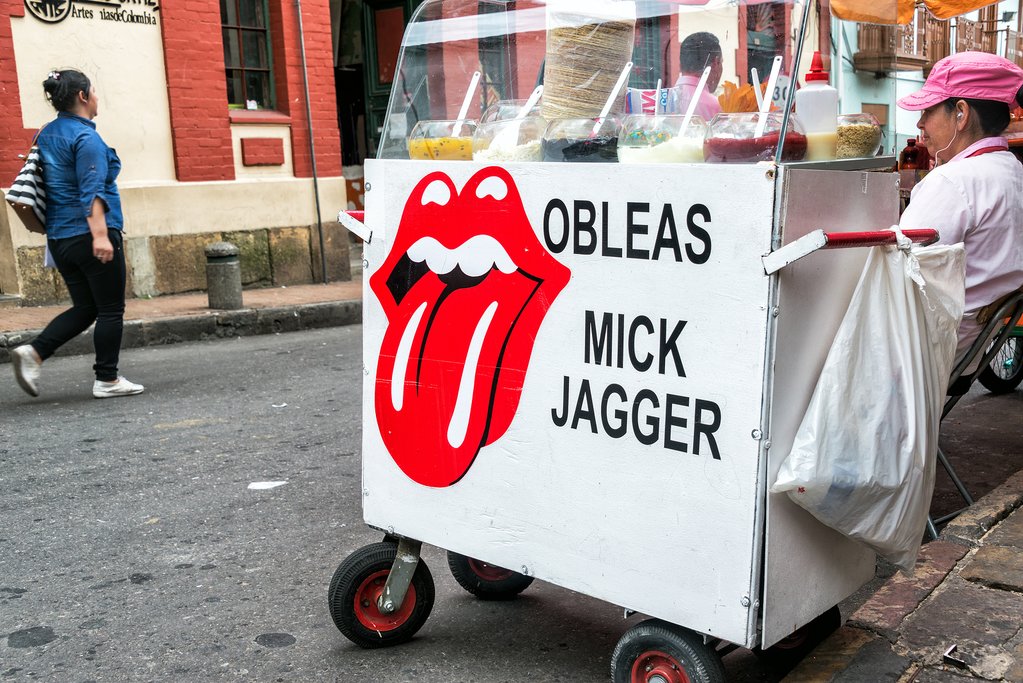
Another sweet treat found throughout Colombia, the *oblea* is a large, round, thin-wafer sandwich, with several layers typically spread with raspberry or strawberry jam, shredded cheese, and *crème de leche* or *arequipe*. They’re usually made to order, with as many layers as you desire, and served wrapped in foil. The combination of the crispy wafers, the sweet jam, the savory cheese, and the creamy filling creates a unique and satisfying dessert. Hey, if it’s good enough for Mick Jagger (who ate one on the street when in Bogotá for the Rolling Stones concert in 2016), then it’s good enough for you.
## Pandebono: Cheesy Bread from Heaven
The *pandebono* (which derives its name from “good bread”) is another doughy-soft, cheesy slice of heaven. It’s made from corn flour, cassava starch, cheese, and eggs. It’s especially found around **Cali** and the **Valle del Cauca**, where it’s a popular breakfast staple. The warm, cheesy flavor and the soft, slightly chewy texture make *pandebono* a truly addictive treat.
## Patacones: Simply Delicious Fried Plantains
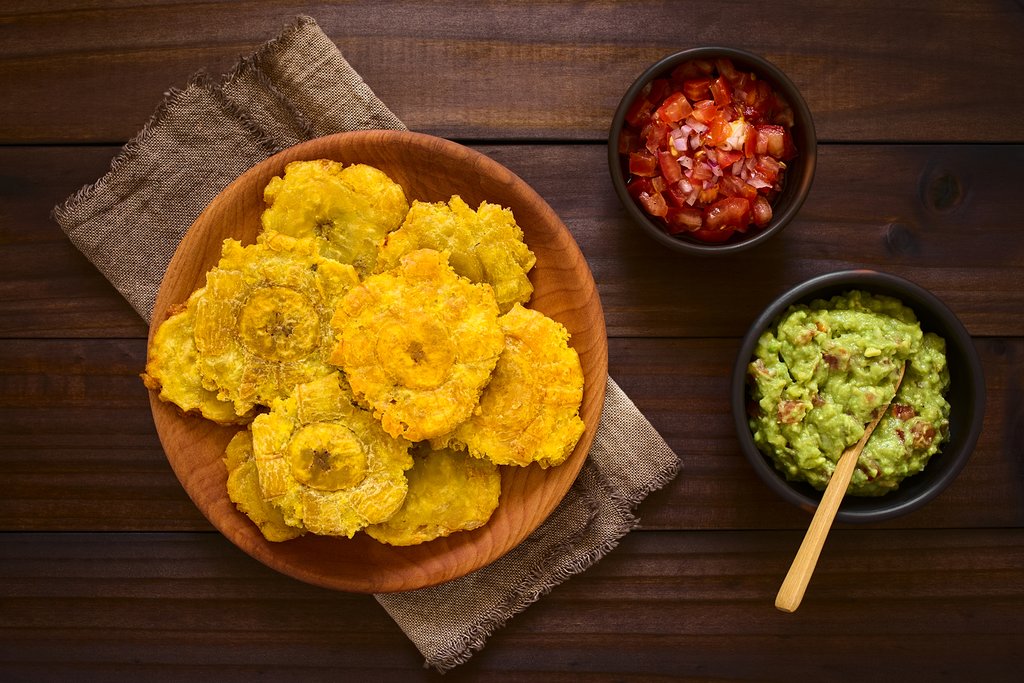
*Patacones* are a simple yet satisfying snack made from green plantains squashed flat into a patty and deep-fried. You’ll become familiar with them as a side dish to main plates in restaurants. But they’re commonly sold at street stalls and are sometimes topped with avocado and a savory *hagao* creole sauce of tomato and onion. The crispy exterior and the slightly sweet flavor of the plantain, combined with the creamy avocado and the savory sauce, make *patacones* a delightful snack.
## Picada: A Hearty Platter of Meaty Delights
If you’re looking for a truly filling street dish, seek out a *picada* (the word means “chopped”). Overflowing with chunks of grilled *chorizo*, steak, and maybe an intestine or two, this hearty platter comes with all the trimmings: corn on the cob, plantain, yucca, and boiled *papas criollas* (new potatoes) stewed in herbs. The *picada* is a celebration of meat and is perfect for sharing with friends.
## Raspao: Shaved Ice to Beat the Heat
Especially popular in Cartagena, where they’re served to beat the stifling heat, these shaved-ice snow cones drizzled with fruit juice are irresistible. You’ll find them sold from carts in all major towns in the *tierra caliente* (hot zone) of coastal Colombia. The icy coolness and the sweet, fruity flavors make *raspaos* the perfect way to cool down on a hot day.
## Salchipapa: A Classic Fast-Food Combination
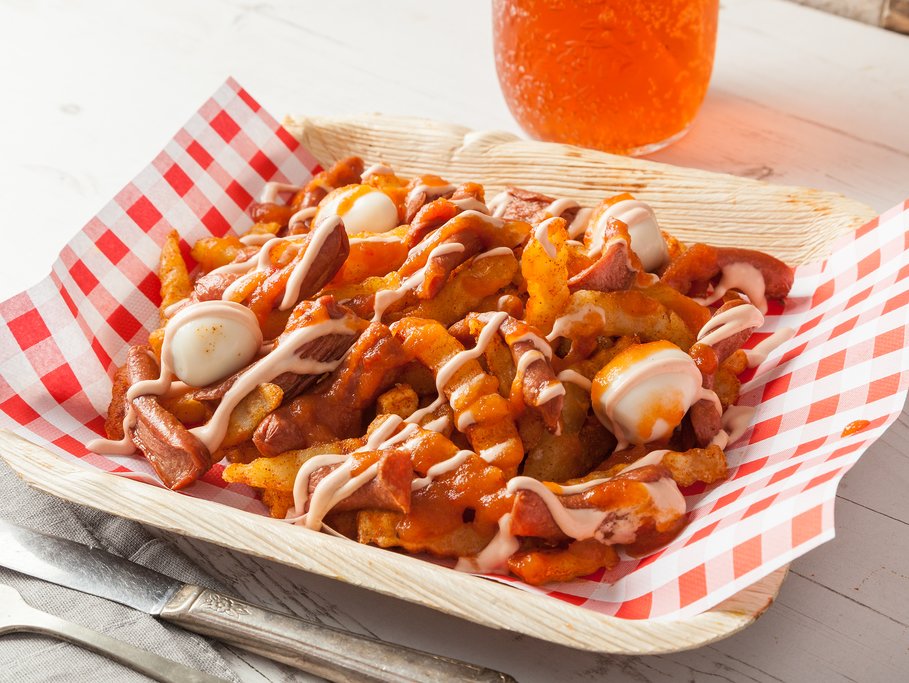
Cross a hot dog (*salchicha*) with a potato (*papa*) and what do you get? A *salchipapa*. A street food staple, this plate of chunky hot fried papas and sausage is served with ketchup and maybe a savory sauce. It’s a no-frills fast-food option that sometimes includes quail eggs. The salty fries and the savory sausage, combined with the ketchup and sauce, make *salchipapa* a satisfying and inexpensive meal.
## Tamales: Wrapped in Banana Leaves and Steamed to Perfection
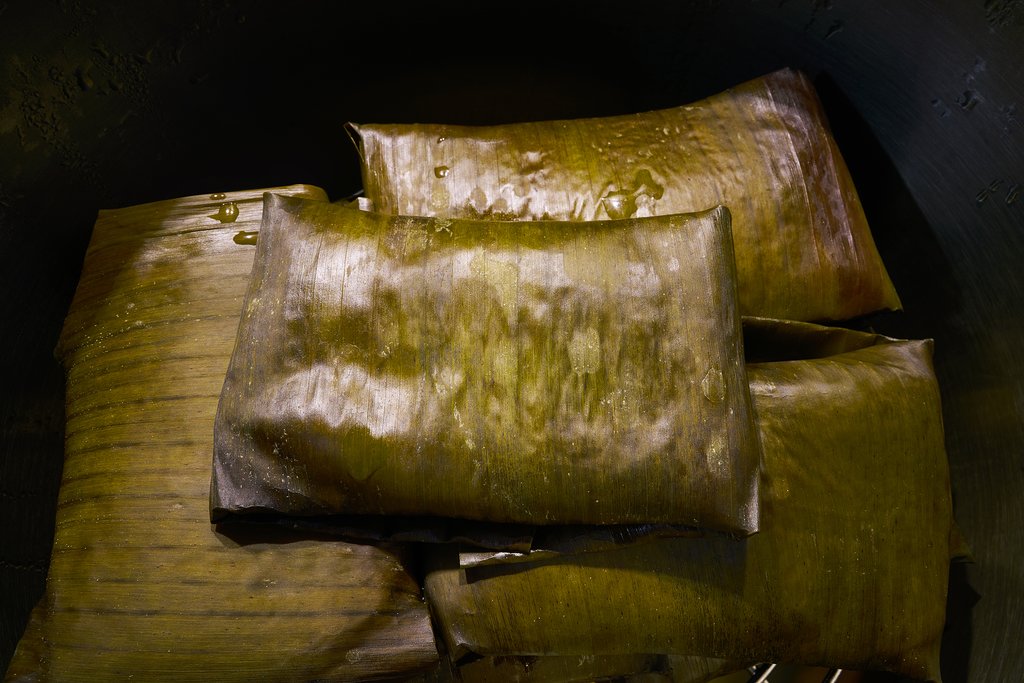
A carry-over from pre-Columbian cultures, *tamales* are standard fare throughout Mexico as well as Central and much of South America. You’re likely familiar with the recipe: corn dough mixed with meat or veggies (sometimes with cheese) and steamed inside wrapped banana leaves. Yes, Colombians substitute banana leaves for corn husks. Ingredients also vary slightly from place to place, with the regions of Bogotá, Cali, and **Tolima** putting their own spin on this classic dish. The moist corn dough, the flavorful filling, and the subtle aroma of the banana leaves make *tamales* a comforting and satisfying meal.
## Tintico: A Quick and Warming Coffee Fix
No shocker that Colombians produce some of the best coffee in the world. Still, a gourmet coffee culture has yet to fully emerge within the country. Most locals take their coffee watery as a *tintico* (little coffee). It’s popular in the highlands where it’s sold on the street as a quick, warming pick-me-up. The strong, black coffee provides a quick burst of energy and is the perfect way to warm up on a cool day.
## Tropical Fruit: A Cornucopia of Flavors
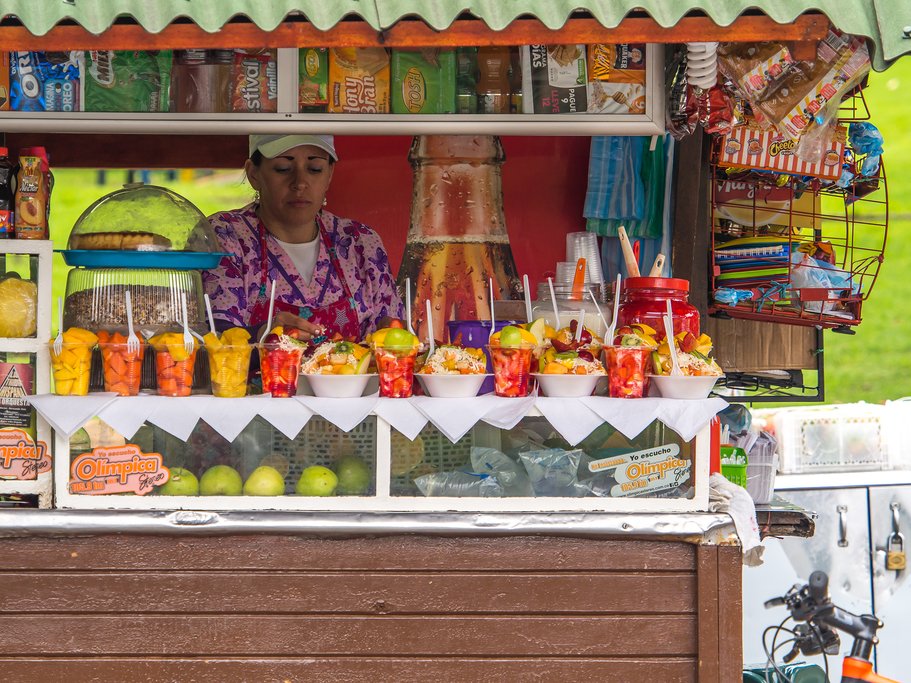
Last but not least is Colombia’s cornucopia of tropical fruits—banana, guava, mango, papaya, and watermelon just to name a few. In the highlands, you can add strawberries and other temperate fruits to the list. Cartagena is renowned for its *palenqueras*, Afro-Caribbean women in traditional dress who sell fruits from baskets carried atop their heads. But every city has vendors selling diced fresh fruits in plastic cups with a toothpick or plastic fork. Try a refreshing *mango biche*, shreds of mango doused with lime juice and salt and pepper! The sweet, tangy, and refreshing flavors of Colombian tropical fruits are the perfect way to end your street food adventure.
Colombia’s street food scene is a vibrant and diverse culinary landscape that offers something for everyone. From savory pastries and hearty meals to refreshing drinks and sweet treats, the streets of Colombia are alive with flavor. So, venture out, explore, and indulge in the delicious world of Colombian street food!
B-366

